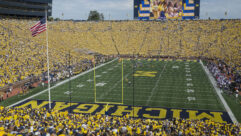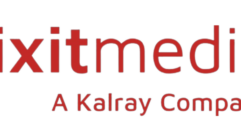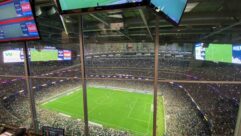
Mitsubishi XD510U
May 1, 2008 12:00 PM,
By Jeff Sauer
Affordable, low-maintenance projector balances brightness and color to fit business and education environments.

In the projector industry, we’re all so familiar with RGB primary colors that it’s sometimes a little jarring to think about producing additive colors any other way. Yet RGB is just one imperfect color model that ultimately cannot produce all of the colors we see in nature. That’s particularly true when there’s a competing goal of producing images that are bright enough to cut through the ambient light in a typical office environment.
Mitsubishi’s new XD510U uses a DLP-based image engine, Texas Instruments BrilliantColor technology, and a new RGBWYC six-segment color wheel to produce surprisingly good color while still achieving the brightness that business settings require. Even still, it remains an affordable, low-maintenance projector that should appeal to the broad business and education communities. The XD510U has a MSRP price of $2,495 — although I’ve seen it for less than $1,000 online.
The XD510U is the middle child in a new family of three 500-series XGA business projectors, with a fourth SVGA stepsibling also in the mix. Altogether, they range in brightness from 2200 lumens (for the $895 MAP XD500U and the $649 MAP SD500U) to the 3000-lumen XD520U (price TBA). All projectors in the series use the same 6.5lbs. white chassis, are filter-free, and have a top-loading lamp replacement for easy, continuing operation.
To keep them affordable, all 500 series projectors have the same basic business-connection options. There are two 15-pin VGA inputs and one 15-pin passthrough for a local monitor; these can accept component video with a splitter cable. There are also the obligatory S-Video and composite jacks, with stereo RCA jacks for the video inputs and a stereo mini-jack for the data inputs. An RS-232 port and a USB port are also provided for control.
The onscreen menus are typical Mitsubishi — although there are a few noteworthy additions that leverage the new BrilliantColor implementation. Smartly, Mitsubishi goes in both directions with the technology by making it easier for the novice to quickly adjust image settings to different room conditions, while at the same time making it deep enough to take advantage of better color if you’re willing to work a little at it.
First, there’s a Wall Screen option that lets you choose the wall color to accommodate awkward, less-than-ideal business projection surfaces. Choices include beige, light blue, light green, pink, blackboard, and whiteboard, plus “off” for when you do actually have a real projection screen. That range is admittedly limited, but you can fine-tune the intensity of each setting using a 1 to 5 scale. The XD510U’s color-processing power adjusts the color temperature and color/tint settings automatically.
Mitsubishi XD510U
May 1, 2008 12:00 PM,
By Jeff Sauer
Affordable, low-maintenance projector balances brightness and color to fit business and education environments.
More interestingly, there’s a new Color Enhancer setting that acts first as a simple list of preset modes — including familiar defaults such as Presentation, Theater, Standard, Auto, and User. Auto adjusts settings based on input type, and the other presets are straightforward enough. It’s the User setting that allows you to adjust the BrilliantColor settings manually with four more settings — Gamma Mode, BrilliantColor, RGB Color, and RGB Tint — that offer more direct control of color and accurate image quality. The three gamma modes — Dynamic, Natural, and Detail — adjust how quickly brightness ramps toward bright white with increasingly lighter grays. For example, the Dynamic mode makes the contrast between lighter and darker shades more pronounced, but it loses detail in the smaller steps in between. Adjusting the BrilliantColor scale recalculates colors so that light is shining through more color-wheel segments more often.
MULTIPLE PRIMARIES
The XD510U RGBWYC six-segment color wheel is certainly not the first attempt at moving beyond red, green, and blue primaries. In addition to clear color-wheel segments that solely serve to increase brightness, several projector makers including Mitsubishi have added a fifth yellow color-wheel segment to enhance common pastel shades — including skin tones — while also increasing brightness.
However, there’s no free lunch when it comes to balancing color and brightness when using a color wheel of any number of segments. For example, the more non-red segments there are in a specific color wheel, the less amount of time the DLP micromirrors can shine light to make pure red, blue, or green. Yet if pure reds, greens, and blues are rarer in most images than mixed colors, then the overall brightness is augmented.
Ultimately, that makes the brightness capabilities of the XD510U rather subjective, even by the numbers. Mitsubishi lists brightness at 2600 ANSI lumens, but that number is based on pure white, and only when everything is configured to maximize white — a fairly unrealistic usage scenario. Even configured as such, I measured only 2520 in the brightest spot on the screen with an ANSI average of 2162 across the screen. With the projector setup in more typical Presentation mode (still overly bright for accurate color), my brightness measurements were down around 2000 (2012) lumens. Switching through different preset modes of Standard and Theater modes brought the overall brightness down another 20 percent and 40 percent, respectively.
Contrast-ratio measurements are similarly context dependent, but as examples, I measured 1234:1 using the default Presentation mode settings, 1006:1 in Standard mode, and 477:1 in Theater mode. The same is true of colors. If you want the highest brightness, you’re going to sacrifice color accuracy — the DLP micromirrors need to be reflecting light through more segments of the color wheel. The result is that green and — somewhat surprisingly given its dedicated segment — cyan are skewed far to the right on the CIE reference chart because BrilliantColor recalculates cyan using more than just the cyan segment in order to achieve the brightness. The same is true for other colors and shift occurs, and they occur consistently when BrilliantColor, Dynamic, and even Natural Gamma modes are active.
Mitsubishi XD510U
May 1, 2008 12:00 PM,
By Jeff Sauer
Affordable, low-maintenance projector balances brightness and color to fit business and education environments.
Yet the trade-off isn’t bad for most business uses because the industry has reached a level where there are lumens to spare. The XD510U is actually rated less bright than previous models. Plus it’s an effort to find a better balance between brightness and color, which is where the XD510U is at its best.
It can put out the light against high-ambient light when necessary, but it can also offer a better picture when enough brightness is enough. Even better, while getting there still takes a few menu adjustments, Mitsubishi has offered presets that get you half way there with little effort or eye for color during setup. If you have the wherewithal to do better, the XD510U can return the favor.
PRODUCT SUMMARY
Company: Mitsubishi
www.mitsubishi-presentations.com
Product: XD510U
Pros: Sharp image quality ideal for presentation graphics and text, enough brightness.
Cons: Limited connectivity, trade-off between peak brightness and accurate color.
Applications: Corporate and educational environments.
Price: $2,495
SPECIFICATIONS
Brightness: 2600 ANSI lumens
Contrast: 2000:1 full on/off
Native resolution: 1024×768
Configuration: 1″×0.55″ DLP DMDsix-segment (RGBWYC) color wheel
Light source: 230W lamp (2,000 hours; 4,000 hours low mode)
Lens ratio: Manual focus, 1.6-1.96
Zoom: Manual 1.2:1 optical zoom, F=2.5-2.8, f=18.4-22mm
Projection distance: 4.3ft. to 32.8ft.
Screen size: 40in. to 300in. diagonal
Loudpeakers: 2W monoaural
Dimensions (W×H×D): 13.1″×4.0″×9.8″
Weight: 6.5lbs.
Warranty: Three year parts and labor










